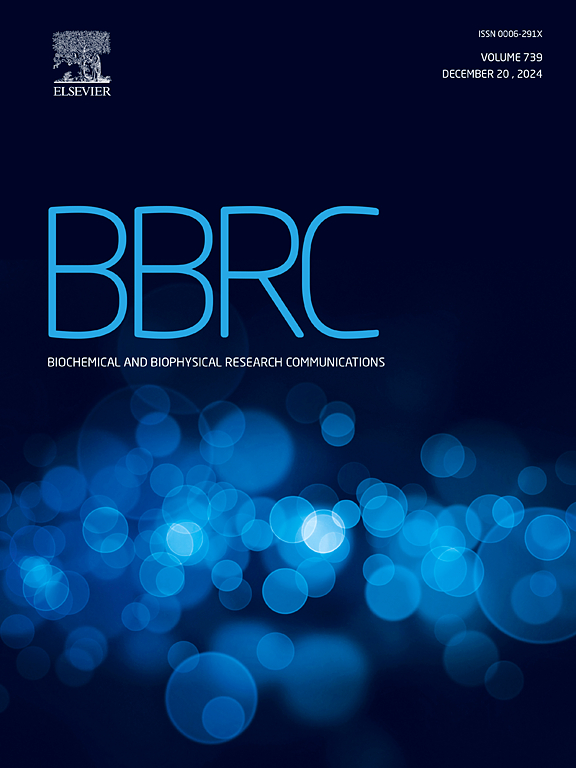Development of a versatile system for evaluating the target protein degradation activity of novel ubiquitin ligases utilizing existing PROTACs
IF 2.5
3区 生物学
Q3 BIOCHEMISTRY & MOLECULAR BIOLOGY
Biochemical and biophysical research communications
Pub Date : 2025-01-20
DOI:10.1016/j.bbrc.2025.151370
引用次数: 0
Abstract
Proteolysis-Targeting Chimeras (PROTAC) are a bifunctional molecule that binds to a protein of interest (POI) and a ubiquitin ligase, thereby inducing the ubiquitination and degradation of POI. Many PROTACs currently utilize a limited number of ubiquitin ligases, such as von Hippel-Lindau (VHL) and Cereblon. Because these ubiquitin ligases are widely expressed in normal tissues, unexpected side effects can occur. Therefore, to expand the repertoire of ubiquitin ligases that can be utilized in PROTACs, we aimed to develop a versatile system to identify suitable novel ubiquitin ligases for PROTAC-mediated protein degradation using existing PROTACs. Chimeric ubiquitin ligases are constructed by fusing VHL with the ubiquitin ligase of interest that is stably expressed in cells. An existing PROTAC that binds to VHL was added to the cells, and the POI degradation activity was evaluated. In this study, we showed that epidermal growth factor receptor can be degraded by an existing PROTAC utilizing a chimeric ubiquitin ligase that fuses VHL and endoplasmic reticulum-localized ubiquitin ligase, HRD1. These results demonstrate that this novel approach can be used to identify suitable ubiquitin ligases for PROTAC-mediated degradation using existing PROTACs. Expanding the repertoire of ubiquitin ligases that can be utilized for PROTAC by using this versatile system is expected to enable the development of more effective and specific PROTACs for cancer and other diseases.
求助全文
约1分钟内获得全文
求助全文
来源期刊
CiteScore
6.10
自引率
0.00%
发文量
1400
审稿时长
14 days
期刊介绍:
Biochemical and Biophysical Research Communications is the premier international journal devoted to the very rapid dissemination of timely and significant experimental results in diverse fields of biological research. The development of the "Breakthroughs and Views" section brings the minireview format to the journal, and issues often contain collections of special interest manuscripts. BBRC is published weekly (52 issues/year).Research Areas now include: Biochemistry; biophysics; cell biology; developmental biology; immunology
; molecular biology; neurobiology; plant biology and proteomics

 求助内容:
求助内容: 应助结果提醒方式:
应助结果提醒方式:


